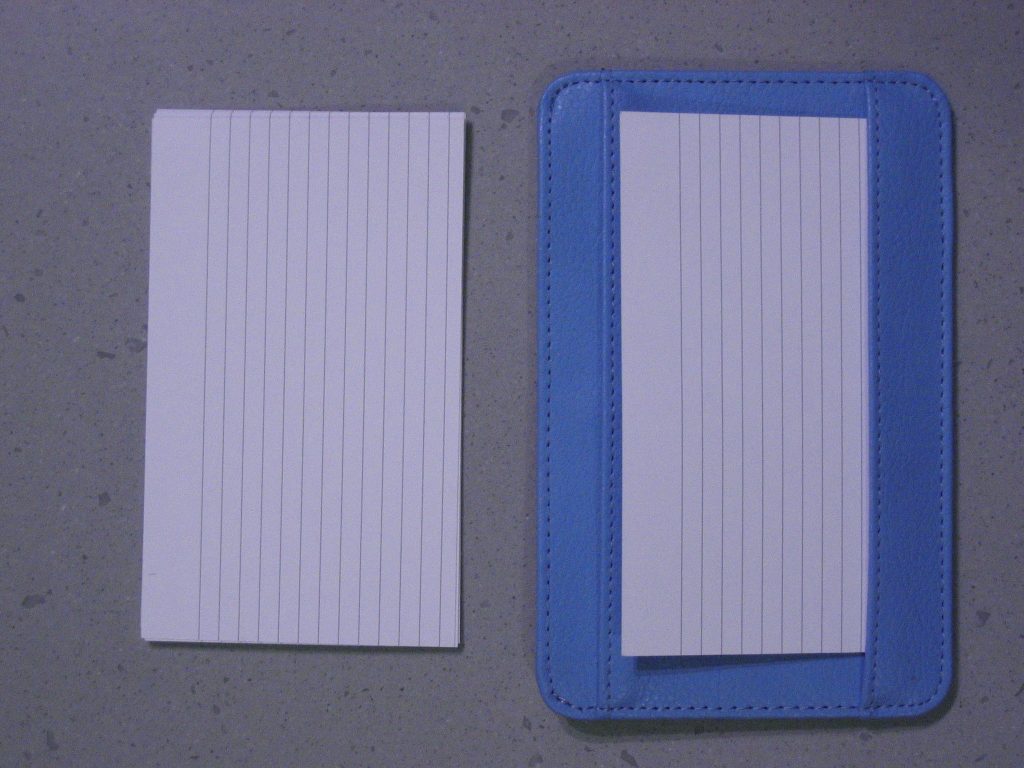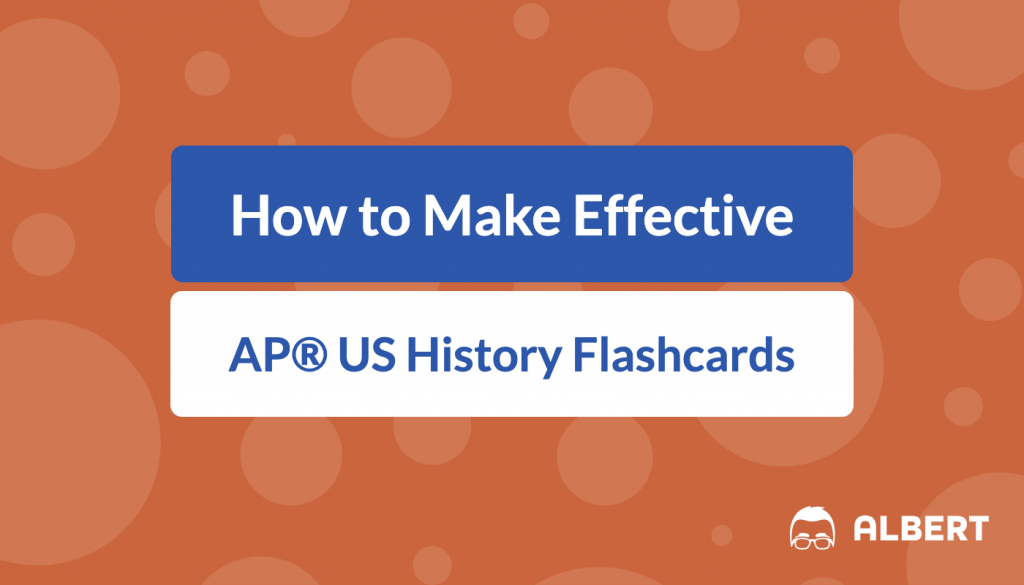You have probably seen “Make Flash Cards” show up on just about every AP® review guide article. Well, it’s for good reason! Flashcards are one of the simplest and most helpful study tools around, and they should be an essential part of your AP® US History study plan. The only thing that can take this study strategy to the next level is making some killer effective flashcards.
Why Make Your Own?
There are some APUSH flashcards available for sale, and they would certainly be helpful for your studying. They cover a ton of information and are certainly convenient. However, making your own flash cards can be way more beneficial.
When you make your own flash cards, you are responsible for finding the information yourself. This means searching through your textbooks and being fully immersed in the course material. Also, research says that the simple act of writing things down can help us remember things better. Since you are writing out all the information for your flashcards, you are already helping yourself!
How Do I make Effective AP® US History Flashcards?
Use index cards. Index cards were virtually made to be used as flashcards; particularly those with one blank side and one lined side. They are just the right size to fit a decent amount of information, and are incredibly portable. If index cards are not available to you, use printer paper. Fold it over itself, making 4 or 8 squares, and then cut down the crease lines. Ta-da! Homemade index cards.

Categorize your information. Since AP® US History covers almost 500 years worth of time, it is a good idea to divide flashcards up into sections. I recommend using the 9 different time periods outlined in the APUSH course description. Within these categories, find the important dates, events, people and terms that you need to know.
Write the information down on flashcards. This idea is of course not that complicated. You take one piece of the information and put it on one side of the flashcard, and the rest of the information on the other side. There are two main ways to do this, each with its own pros and cons:
1. Question form. The benefit of writing all of the information on cards in question and answer format is that it helps you start thinking about how things might be asked on the test. It allows you to practice directly answering questions instead of simply reciting information. This way, the flash cards almost become a practice quiz. The downside of this method is that it becomes difficult to answer the cards in reverse order, which is an effective study technique (although then it becomes like Jeopardy, which is kind of cool). Also, you can find sample APUSH questions online to put on your flashcards or to use as a guide for making our own questions.
2. Simple information form. Instead of writing things down in a question, you just write down the main idea on one side, and the explanation of that main idea on the other. This usually causes you to go a little more in depth with your answers as you are addressing a bigger idea, instead of just a question. You can also work backwards by reading the explanation and providing the main idea.
Both of these methods are helpful, and you will likely use a combination of both when you are making your own flashcards. A good question card might say “When was the Civil War?” on one side and “1861-1865” on the other. The other format might just say “reconstruction” on one side of the card and an explanation of that era on the other.
Make the information stand out. Part of what makes flashcards so helpful is that they serve as visual reminders. The more memorable your cards are, the more the information will stick. Use brightly colored pens, or draw diagrams when necessary. Write out the information using clear and bold handwriting. You want your photographic memory to kick into high gear when it sees your cards.
Study!
As mentioned earlier, the very act of making flashcards is going to help you study, so running through them a couple times is really going to solidify the information in your memory. These flash cards will be the thing that takes your AP® US History review to the next level.
Pro tip: Make a game out of the flashcards with your friends. Use skittles as bets for correct or incorrect answers, or have everyone do 3 pushups for every flash card you get wrong. Its crazy what a little extra incentive will do to help you focus, and it also just makes things a little more fun.
Looking for AP® US History practice?
Check out our other articles on AP® US History.
You can also find thousands of practice questions on Albert.io. Albert.io lets you customize your learning experience to target practice where you need the most help. We’ll give you challenging practice questions to help you achieve mastery of AP® US History.
Start practicing here.
Are you a teacher or administrator interested in boosting AP® US History student outcomes?
Learn more about our school licenses here.








